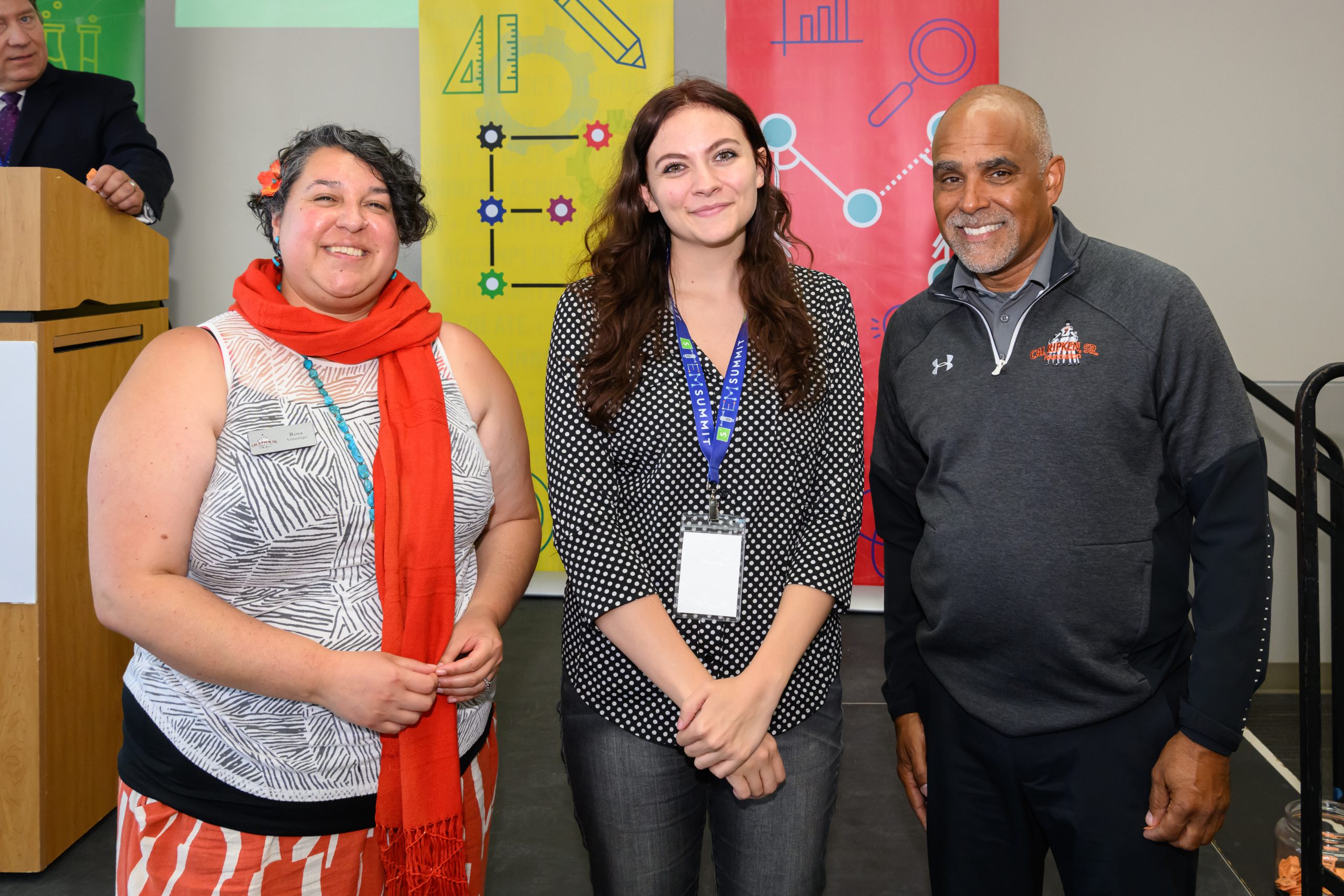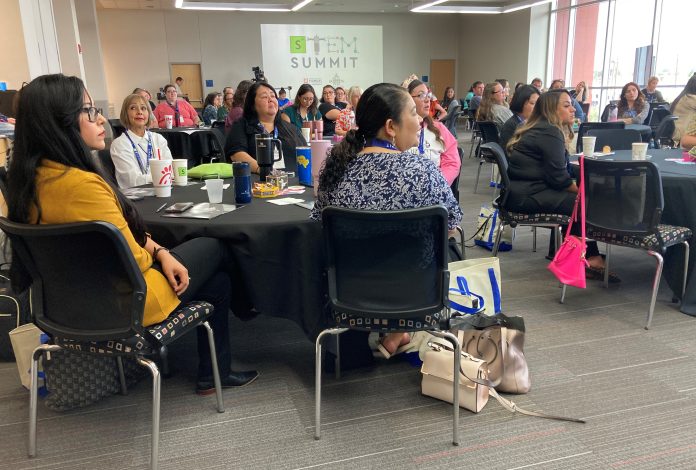
Permian Basin teachers were beyond enthusiastic about STEM labs and the opportunities they provide during an inaugural STEM Summit Tuesday at Odessa College.
About 100 teachers from 22 Permian Basin counties attended the summit, which was sponsored by the Permian Strategic Partnership and the Cal Ripken Sr. Foundation in the Saulsbury Campus Center.
The event was emceed by CBS 7 Anchor Jay Hendricks and he moderated a panel discussion with teachers and a principal on the benefits of the STEM labs. STEM stands for science, technology, engineering and math.
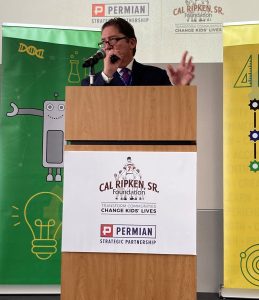
By 2024, the Cal Ripken Sr. Foundation will have installed 134 STEM Centers in elementary schools across 22 counties in Texas and New Mexico. The Permian Basin STEM Centers will impact students from pre-K through fifth grade, 65.5% of whom are living below the poverty level.
Funders are the Permian Strategic Partnership and Cal Ripken Sr. Foundation.
Pease Elementary School Principal Micah Arrott said the STEM lab installed at her campus in September 2022 sells itself. The students took their parents to see it
“We left the door unlocked. We left the materials accessible, and they did the rest. At first I was like, Oh my gosh, it’s all new and this is thousands of dollars of equipment,” Arrott said.
But then she took a breath.
“They have so much pride, and are so proud of all the materials,” Arrott said.
They capitalized on family nights and got parents on board, she said.
“We partnered with our curriculum and instruction and digital learning specialists to have a coding night and my STEM teacher … does an amazing job of social media. She … tweets out the things that they’re learning within the STEM lab,” Arrott said.
Monica Almanza, a fifth-grade teacher at Roselawn Elementary School in Artesia, N.M., said STEM can be integrated across curriculums. It’s amazing how fast students pick things up and school the adults, she said.
“They (the students) learn quickly. They’re fast learners. They teach the teachers, so it’s not too difficult if your attitude is we’re going to do it and we’re going to succeed. It’s all in the attitude,” Almanza said.
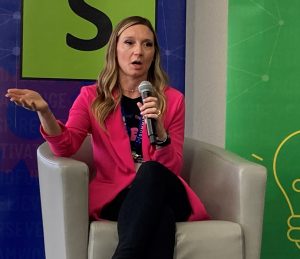
Elizabeth Kivin teaches third through fifth grade STEM at Greenwood Intermediate School. Kivin said the students are automatically “super excited” to go to her class because they know they’re about to be “hands-on.”
She gives the students a problem and they form their own groups, ideas and examples of how they’re going to solve it.
“It really helps to build their teamwork and being able to problem solve and (think critically) because they work together so seamlessly. Even my groups who, like was said earlier, may not normally pair up together, find that they work really well together,” Kivin said.
They recently competed in the national STEM challenge and came in third. The Young Women’s Leadership Academy in Midland came in first.
Arrott said they are fortunate to have Melissa Rivera as the main STEM resource on campus.
“She does a lot of the legwork for our teachers to help make their job easier in anything that they want to do,” Arrott said.
Joe Rossow, senior vice president of STEM Innovation and Outcome Measurements at the Cal Ripken Sr. Foundation, said they are going to add eight new lessons in the fall that tie into oil and gas, he said.
“Along with my team, we do Zoom trainings in the fall and in the spring to help re-teach or go in depth with some of the areas and in year three next year, we’re adding a new educational product to it,” Rossow said.
They haven’t decided what the educational product is going to be yet, he said.
The centers are aimed at prekindergarten through fifth grade, so it starts students thinking about STEM from a young age.
“By the end of this year, we’ll have over 400 stem centers in 20-plus states across the country, impacting over 100,000 kids and about 3,000 teachers, so it’s gotten really big,” Rossow said.
Having been in education for about 24 years before joining the Cal Ripken Sr. Foundation, Rossow said it’s a wonderful feeling to be able to help open doors for students.
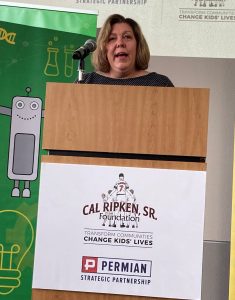
OC Vice President of Advancement, Business & Governmental Relations Jacqui Gore said the work teachers are doing in the Permian Basin and Southeast New Mexico is very important.
“You’re preparing the students who we hope will then come here to Odessa College to further their education. We’re so pleased to work with the Cal Ripken Sr. Foundation and Permian Strategic Partnership on hosting this event. We hope that we can do many more things with the Cal Ripken Foundation to continue to educate our students in the area,” Gore said.
“STEM is very important, and here at Odessa College, we really focus on growing our own; how can we prepare our students to fill all of these wonderful … high-skill, high-wage job openings. We’ve talked to many people from across the country that say we have such a unique situation here in the Permian Basin (and) Southeast New Mexico where we have a number of great jobs. But how can we better prepare our students to take those jobs so that we don’t have to recruit people from across the country to come out here,” Gore added.
Melissa Ware, director of education and workforce at PSP, said she thinks having the summit in Odessa was a great opportunity for teachers. They were trained when the STEM Centers were installed, but this takes it a step further.
“I love that we’re providing teachers with opportunities to engage with experts that have created this program and that can help them learn and develop their skills on how to take it to their students,” Ware said.
Ware added that this is a boon for the workforce in the region.
“Like Jacqui said, we have so many openings and we just don’t have the skilled workforce that we need. It’s crucial that we are developing these skills in our students so that they can grow into our future workforce,” Ware said.
The summit breakout sessions, led by industry experts, focused on topics such as integrating STEM practices within state standards, using 3D printers in the classroom, and utilizing robotics and coding tools.
